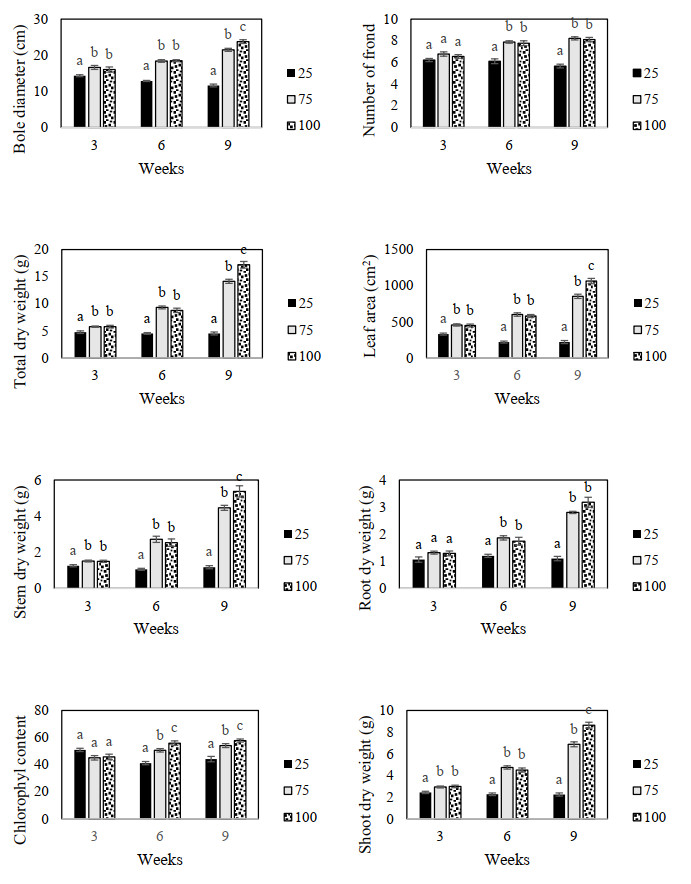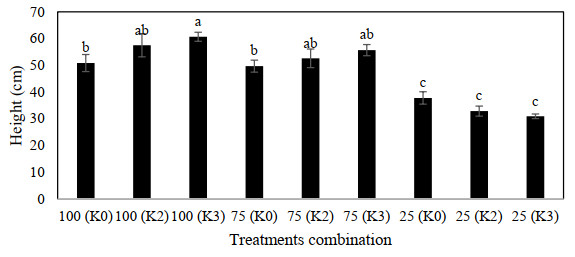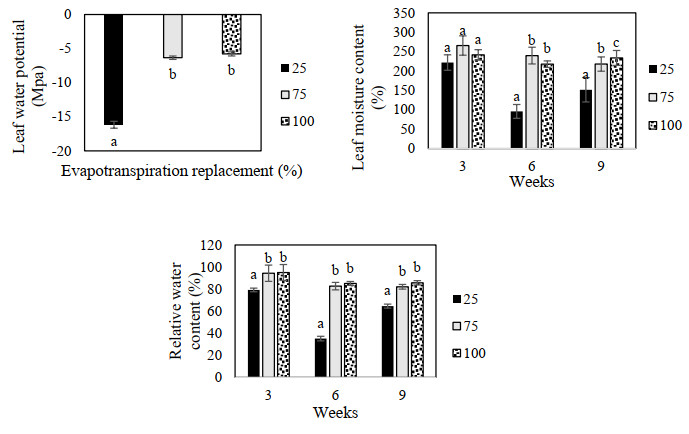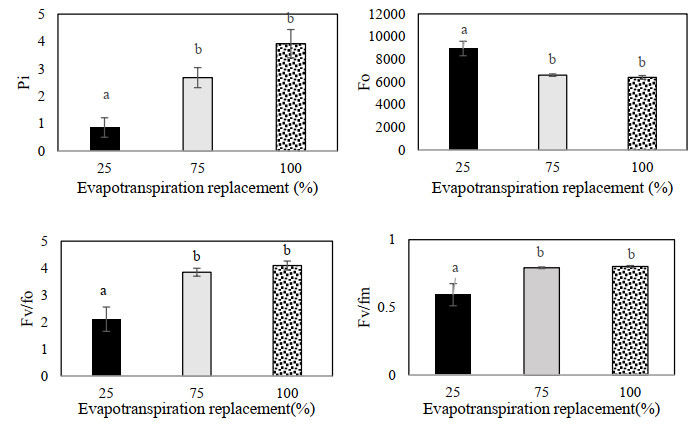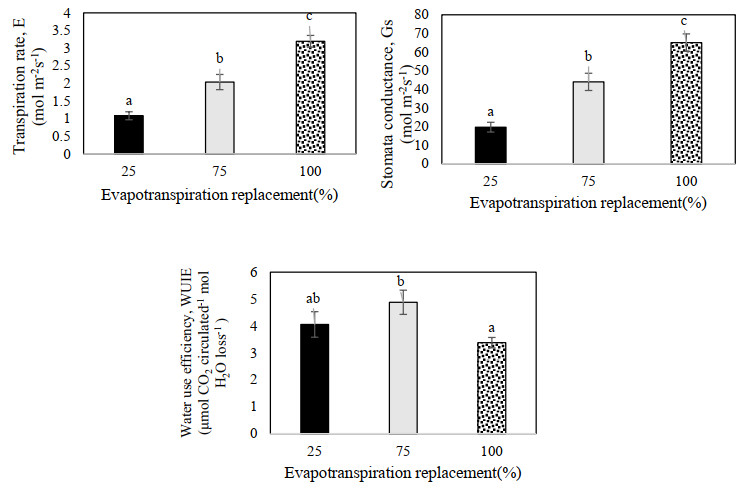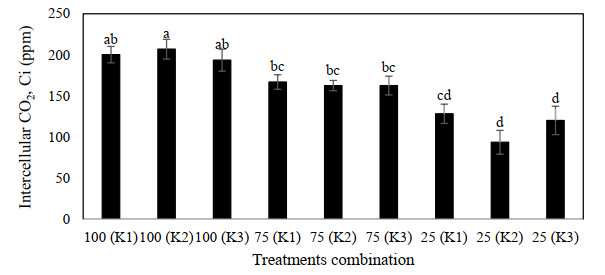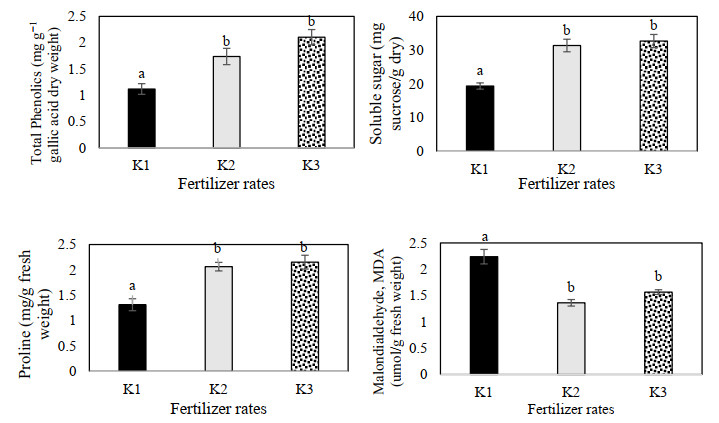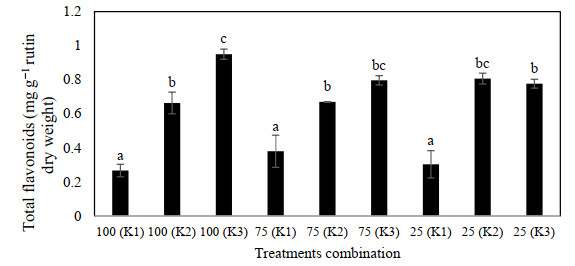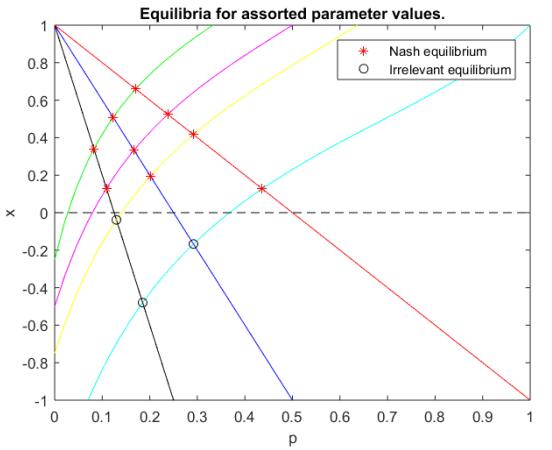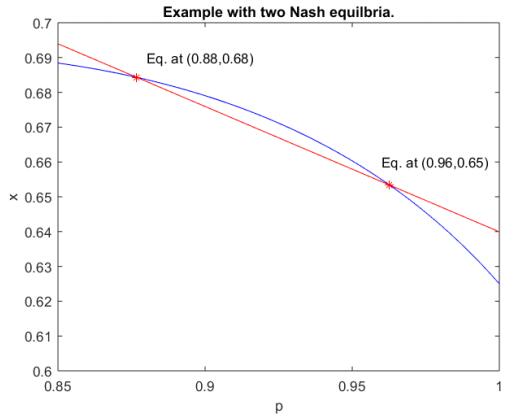We utilize optimization methods to determine equilibria of cryptocurrencies. A core group, the wealthy, fears the loss of assets that can be seized by a government. Volatility may be influenced by speculators. The wealthy must divide their assets between the home currency and the cryptocurrency, while the government decides the probability of seizing a fraction the assets of this group. We establish conditions for existence and uniqueness of Nash equilibria. Also examined is the separate timescale problem in which the government policy cannot be reversed, while the wealthy can adjust their allocation in reaction to the government's designation of probability.
1.
Introduction
Oil palm (Elaeis guineensis Jacq.) is an essential agricultural commodity in South East Asia particularly in Malaysia and Indonesia [1,2,3]. Since the thrive of this industry in the 1960s, oil palm cultivation in Malaysia increased from 54,000 ha to 4.7 million ha in 2009 [4] and to date, this country is among the largest palm oil producer (39%) and exporter (44%) in the world [5]. Being the highest yielding oil crop (t ha–1), oil palm needs an optimum supply of water and mineral nutrition [6].
It is well known that oil palm trees require about 2000 mm rainfall per year without any dry season for optimum growth [1,7]. However, according to Paterson and Lima [3], the scarcity of water becomes a significant constraint under the global climate change, which affects the physiology of this crop and ultimately limiting its productivity. The effect of water stress on E. guineensis has been studied in numerous experiments. It was reported that water deficit decreased the oil palm photosynthetic rate by stomata closure due to high vapor pressure deficit (VPD)
[8,9], while impairment in the photosystem Ⅱ (PSII) may lead to the rise of reactive oxygen species (ROS) indicating the occurrence of oxidative stress within the plant [10]. An experiment conducted by Silva et al. [11] also proved that drought reduced net CO2 assimilation rate along with chlorophyll concentrations and Rubisco total activity in two oil palm hybrids. Whereas, another group of researchers reported that chlorophyll fluorescence (fv/fm) of oil palm seedlings was significantly reduced as it is a protection mechanism to water stress [12]. Thus, it is agreed that drought affects oil palm growth and development.
Potassium (K) fertiliser is believed as one of the ways to minimise the drought effects on plants [13,14,15,16]. Potassium is a macronutrient that is required in a large amount by most crops, and it plays a significant role in plant metabolism [17]. The involvement of K in enzymes activation has been reported in many studies, including in cotton leaves, where K stimulates its carbohydrate metabolising enzyme activities [18]. K assists the photosynthetic metabolism in plants by maintaining the electrical balance at the site of ATP where the deficiency of K will result in a decrease in ATP production rate; thus, reducing CO2 assimilation [19,20]. Bahrami-Rad and Hajiboland [13], as well as Peoples and Koch [21], agreed that K+ ions are responsible in controlling the guard cells where an insufficient amount of these ions will cause stomatal closure; thus, regulating the photosynthesis in plants. Other functions of K in plants include long-distance transport [22], protein and starch synthesis [15,23], as well as enhanced resistance to disease [24].
Few researches have been conducted on the interaction between potassium fertiliser and drought including in cotton [16], maize [14], wheat [25], peanut [26], and rice [15]. K fertiliser could alleviate the drought effects on some of the plants while some of them gave no significant difference in the drought effect regardless of the rate of K fertiliser. As the case of oil palm seedlings, the research on the method of evapotranspiration replacement and the levels of K fertiliser is still very scarce. As fertiliser constitutes about 60% of the total oil palm production cost [27,28], it is essential to study the optimum K rates under water scarcity for higher production. Hence, the current experiment is intended to investigate the effect of water stress and optimum rates of potassium fertiliser on the growth, physiology, and biochemical properties of oil palm seedlings. This research is essential for the agronomical practices in oil palm plantation to alleviate global climate change with appropriate water and nutrient management.
2.
Materials and methods
2.1 Experimental design and plant materials
An experiment was conducted inside the rain-proofed glasshouse at the Faculty of Science, University Putra Malaysia from February to April 2019. The microclimatic condition under the glasshouse is presented in Table 1. A popular oil palm variety, 4-months old tenera (Dura X Pecifera), was used in this study with one seedling per polybag. The experiment consisted of three levels of water treatment, namely 100% ER (Evapotranspiration replacement; well-watered), 75% ER (moderate water stress), and 25% ER (severe water stress). The three rates of K treatments, hereafter called K1 (control), K2, and K3, were applied once in two weeks based on MPOB [29] totalling about five times application (170,340, and 510 kg KCL ha−1), (480,960, and 1440 kg KCL ha−1), (170,340, and 510 kg KCL ha−1), (960, 1920, and 2880 KCL kg ha−1), and (960, 1920, and 2880 kg KCL ha−1) along the experiment (Table 2). Plants were also fertilised with the source of N (ammonia) and P (CIRP) using standard rates. The ER treatment was applied by following the method adopted by Klapwijk and Lint [30]. Randomized complete block design (RCBD) with three times replication was used to test the effects of various levels of potassium under reduced irrigation, totalling up to 81 seedlings in this study. Seedlings were transplanted into polybags (10 × 12 cm with 16 cm diameter) containing Muchong series topsoil and were allowed to establish for a month before being subjected to the drought and fertiliser treatments. All seedlings in the polybags received the same volumes of water to maintain moisture content as close as possible to the predetermined polybag capacity and moisture lost by ER was replaced on alternate days (100%, 75%, and 25%). The water was calibrated once a week and 27 plants were harvested at week 3, week 6, and week 9 after the treatments.
2.2. Vegetative measurements
Plant height, bole diameter, number of fronds, total dry weight, leaf area, root dry weight, stem dry weight and shoot dry weight were measured according to MPOB [31]. Plant height was measured as the distance from the soil surface to an upper end of the longest leave, while the measurement of bole was taken using a digital calliper at the broadest point of diameter stem base in two directions right angle. The number of fronds was counted manually, and the leaf area of oil palm seedlings was measured using a Leaf Area Meter (Li-3100 Area meter, LICOR). Dry weights were obtained by drying the samples using an oven at 75 ℃ for 48 h until the weight was constant. Samples were then weighed using a digital balance. Before harvesting, a SPAD meter (502, Minolta Inc., USA) was used to measure the leaf chlorophyll content.
2.3. Plant water status
Relative water content (RWC) was estimated using the method of Weatherly [32]. Three discs samples per palm were taken using a puncher to determine the fresh weight (FW) using a sensitive digital balance (Mettler Toledo AL204). The samples were then kept in the water for 24 h to regain full turgor before turgid leaf discs were carefully dried with tissue paper and reweighed (TW). The samples were subsequently oven-dried at 75 ℃ for 24 h, and the dry weight (DW) of the sample was recorded. The formula of RWC is as follows:
Leaf moisture content (LMC) was measured when three discs samples per palm were taken using a puncher, and the fresh weight (FW) was determined using a sensitive digital balance (Mettler Toledo AL204). The samples were then dried in an oven at 75 ℃ for 24 h, and the dry weight (DW) of the sample was taken. The LMC can be deduced from the following equation:
The leaf water potential (LWP) of the E. guineensis leaf samples was determined using a pressure chamber (Model 615, PMS instrument). A fully opened healthy leaf number two was chosen for the measurement at each sampling. As the leaf of oil palm seedlings was big, the leaf was first cut into an L shape and placed inside a sealed chamber. Then, the pressure was applied to the leaf and reading was taken when the first water (bubble) appeared at the cut surface. All observations were made in situ between 9:00 and 10:00 h.
2.4. Chlorophyll fluorescence
The fv/fm (quantum efficiency of PS Ⅱ), fv/fo (maximum primary yield of the photochemistry of PS Ⅱ), fo (initial fluorescence), and Pi (performance index) were estimated according to Jaafar et al.[33]. The data was measured around 8:00 am to 10:00 am on fully expanded young leaves number two using a portable chlorophyll fluorescence meter (Handy PEA, Hansatech Instruments Ltd., Kings Lynn, UK). Leaves were darkened for 15 min by attaching dark-acclimation clips to the central region of the leaf surface before measurements; then the chlorophyll fluorescence was obtained from this procedure.
2.5. Leaf gas exchange
The measurement was obtained using the LI-6400XT Portable Photosynthesis System closed infrared gas analyser (Li-COR Inc; Nebraska; USA). The data of net photosynthesis (A), stomatal conductance (Gs), transpiration rate (E), intercellular CO2 concentration (Ci), and water use efficiency (WUE) of oil palm seedlings were taken between 9:00 am to 11:00 am on fully expanded young leaves number two. The WUE was calculated by dividing the net photosynthesis (A) by corresponding transpiration rate (E). In this experiment on E. guineensis, the instrument was set at 400 μmol mol−1 CO2, cuvette temperature of 30 ℃, air relative humidity of 60% with the airflow rate fixed at 500 cm3 min−1 and modified cuvette at 800 μmol m−2s−1 photosynthetically photon flux density 164 (PPFD) [34].
2.6. Biochemical properties
The lipid peroxidation was determined by estimating the level of malondialdehyde (MDA) in the oil palm seedlings following the method described by Jaafar et al.[33]. About 1 g of fresh leaves were ground with a mortar and pestle in 1 mL 0.5% trichloracetic acid (TCA) and centrifuged at 9,000 rpm for 20 min. The supernatant (0.5 mL) was mixed with 20% TCA (2.5 mL) containing 0.5% TBA and heated for 30 min at 100 ℃ in a water bath. Then, the supernatant was centrifuged at 9000 rpm for 10 min, and the resulting supernatant was used for MDA content determination at the specific absorbance of 532 nm.
The method by Bates, Waldren, and Teare [35] was used for proline determination. The oil palm leaves used for gas exchange and chlorophyll fluorescence measurements were removed and was frozen straightaway in liquid nitrogen after collection to be grounded with mortar. The homogenate powder was mixed with 1 mL aqueous sulfosalicylic acid (3% w/v) and filtered through a filter paper (Whatman #1, England). Another 1 mL of glacial acetic acid and ninhydrin reagent (1.25 mg ninhydrin in 30 mL glacial acetic acid and 20 mL 6 M H3PO4) were added to this solution, then incubated for 1 h at 95 ℃ before placed in an ice bath for reaction termination. The reaction was mixed vigorously with 2 mL toluene, warmed to 25 ℃ and the chromophore was measured with a B UV-visible spectrophotometer (model DR/4000, HACH, Loveland, Colorado, USA) at 520 nm using L-proline as a standard.
For the determination of phenolics and flavonoids, 0.1 g of ground dried tissue samples were extracted with 10 mL ethanol (80%) before being filtered with Whatman™ No. 1. As for phenolics, 200 μL of sample extract was mixed with 1.5 mL of Folin-Ciocalteu reagent (diluted 10-fold) and left at 22 ℃ for 5 min. The mixture was then added with 1.5 mL 60 g L−1 NaNO3 solution. The absorbance was measured after two hours at 725 nm. Meanwhile, to determine the total flavonoids, a 1 mL sample was mixed with 0.3 mL NaNO3 in aluminium foil-covered test tube for 5 min. After that, 0.3 mL of AlCl3 (10%) was added and mixed with 2 mL NaOH (1 M). Then, using a spectrophotometer (rutin as a standard), the absorbance was measured at 510 nm [36].
The soluble sugar was identified, according to Ibrahim et al. [37]. A total of 0.5 g samples were mixed with 10 mL of distilled water, then vortexed and incubated in a 15 mL conical tube for 10 min. For anthrone reagent preparation, 0.1 g of anthrone was dissolved in 50 mL sulphuric acid (95%). To prepare a standard curve for the quantification of sucrose in the sample, sucrose was used as a standard stock solution. Then, the dried sample was mixed with distilled water before being centrifuged at 3400 rpm (10 min) and filtered. Subsequently, 8 mL of anthrone reagent was added with 4 mL aliquots and placed in a 100 ℃ water bath for 5 min. The absorbance of the sample was then measured at 620 nm using a UV160U spectrophotometer (Shimadzu, Japan), and the results were expressed as mg sucrose/g dry.
2.7. Statistical analysis
All data were analysed using SPSS statistical software (ver. 25.0 SPSS, Chicago, USA) and were subjected to two-way analysis of variance (ANOVA). Duncan's multiple range test (DMRT) was used to compare the mean with the least significant level of 5%.
3.
Results and discussions
3.1. Plant vegetative growth
Figure 1 shows the plant vegetative growth affected by different water treatment levels on oil palm seedlings. There are no significant differences (P ≤ 0.05) for fertiliser application for all plant vegetative growth parameters, except for height, as shown in Figure 2. However, there is a significant difference in water treatment levels (Figure 1). As the levels of water decreased from 100% > 75% > 25 ER, bole diameter, number of fronds, total dry weight, leaf area, root dry weight, stem dry weight, shoot dry weight and chlorophyll content were also decreased, yet there were no significant differences between 75% ER and 100% ER in most parameters. As the weeks progressed, severe drought (25% ER) caused deterioration in all plant vegetative growth, where at the end of the experiment, it decreased the bole diameter from the control treatment about 51%, number of fronds (30%), total dry weight (73%), leaf area (79%), root dry weight (65%), stem dry weight (78%), shoot dry weight (74%), and chlorophyll content (24%).
The present results indicate that severe water stress reduced the vegetative plant growth of oil palm seedlings significantly. The decrease of bole diameter and leaves area could be attributed to the reduction of cell expansion and stem elongation of the plant [38,39]. Decreasing the size of the leaf is believed to prevent excessive transpiration rate and plants also tend to reduce its frond numbers as a tolerance mechanism due to water scarcity [40]. Table 3 shows the correlation between the number of fronds (R2 = 0.455; P ≤ 0.05) and leaf area (R2 = 0.642; P ≤ 0.01) with relative water content, which is in agreement with Hussain et al. [41] where they found that early season drought stress also suppressed the stem elongation and leaf area of sunflower. The reason for deleterious effect in the root, shoot, stem and total dry weight with an increase in water stress could be due to the inhibition of drought on the growth of oil palm seedlings as reviewed by Anjum et al. [42]. These reductions also come from the deterioration of photosynthesis under water stress conditions [43]. The reduction in plant dry weight concurs with the findings from other researchers who reported a reduction in plant dry weight such as in wheat cultivars and kiwifruit under moisture stress [38,44]. Likewise, the effect of drought can also be seen from the depreciation of chlorophyll content. Hailemichael et al. [45] agree that chlorophyll content is the most crucial factor that influences the photosynthetic rate in the plant. In most plants such as chilli pepper and potato seedlings, this abiotic stress also decreases the content of chlorophyll [46,47].
Contrary to the report in cotton and wheat exposed to drought [16,25], in the present work, there was no significant difference in oil palm seedlings vegetative growth regardless of how much potassium applied to the young oil palm crop. The possible reason might be due to the short period of the experiment whereby the vegetative growth of oil palm seedlings is not able to express the effect of potassium fertiliser. Similar experiments were conducted on peanut [26], laurel [48] and forest species [49], which showed that there was no interaction between irrigation regime and potassium application. A recent experiment on oil palm seedlings also revealed that the application of potassium gave no significant difference in the plant biomass under drought conditions due to the dramatic declination from field capacity to severe stress [50]. Jordan-Meille et al. [51] agree that the relationship between potassium and drought depends on the intensity of potassium and water stress, the timing and species of the plants.
Figure 2 indicates the interaction of different water treatment levels and the rate of potassium fertiliser on the height of oil palm seedlings. The treatment combination in Figure 2 shows that severe water stress (25% ER) significantly decreased the height of oil palm seedlings compared to other treatments regardless of the rate of fertilisers (P ≤ 0.05). However, for the control treatment, increasing the rate of K fertiliser to double and triple has increased the height of oil palm seedlings to about 7 cm and 10 cm respectively. The same trend is shown in treatment 75% ER even though there is no significant difference between the fertiliser rates.
Plant height can be used as an indicator of crop performance. In the current study, the effect of height seems to be contributed by the water stress, whereby the lower the level of water, the shorter the height of oil palm seedlings. The decrement of stem elongation under water stress might be due to the reduction in cell expansion, which is in agreement with Litvin et al. [39] in their experiment with tomato plants. Surprisingly, with the supplementation of K fertiliser, an increment of height under 100% and 75% ER treatments were observed, which proved that potassium is involved in cell metabolic process of the plants and enhances the translocation of assimilates as well as protein synthesis [52]. Nazli et al. [53] and Ortas [54] also found that potassium increased the height of potato and maize crops in their field experiments. However, the height of oil palm appeared to be unaffected by the level of potassium under severe drought. The possible reason might be due to water stress that was too intense that the effect of K rates was not significant, as it was not diluted in the soil to be absorbed by plants [51].
3.2. Plant water status
It was observed that the plant water status of E. guineensis seedlings was also influenced by the water stress (P ≤ 0.05, Figure 3). As shown in Figure 3, relative water content, leaf moisture content, and leaf water potential increased with the increased level of water from the start of the experiment to week 9. The application of 25% ER to oil palm seedling significantly reduced its leaf water potential to more than −15 bars, which is about three times from the control, and there was no significant difference between the control treatment with 75% ER.
Relative water content (RWC), leaf moisture content (LMC), and leaf water potential (LWP) are among commonly used parameters to study the plant water status [55,56,57]. The LWP is the standard parameter for the whole plant status, and RWC shows water content at full turgidity while LMC has been used to signify the water stress [56,57,58,59]. Several experiments have been done to study the relationship between plant water status and drought, including in sugarcane [55], maize [57], grapevine [60], and recently in chilli plant [46], which proved that water deficit is responsible in affecting the water status in plants. Upon water scarcity, the LWP is boosted significantly showing that there is a need for water and demand for transpiration imposed by the environment, while the reduced RWC denotes under drought, plants have less water inside the cell [61].
3.3. Chlorophyll fluorescence
Figure 4 demonstrates that water levels have a significant influence on chlorophyll fluorescence of oil palm leaves (P ≤ 0.05). As the water decreases from 100% > 75% > 25% ER, the fv/fm (quantum efficiency of PS Ⅱ), fv/fo (maximum primary yield of photochemistry of PS Ⅱ), and Pi (performance index) are also decreased even though there is no significant difference between treatment 75% ER with 100% ER (control). However, only the value of fo (initial fluorescence) increased as the water level decreased. When compared to the control treatment, severe drought reduced about 26% of fv/fm, 78% of Pi, 48% of fv/fo and increased 29% of fo.
Chlorophyll fluorescence has become a ubiquitous study in plant physiology to study the effect of environmental stress concerning photosystem Ⅱ (PSII) [62,63,64]. According to the results obtained from this study, the analyses of chlorophyll fluorescence parameters were affected by drought. These results support those of Živčák et al. [65] who reported the decrease of fv/fm due to severe water stress (when the value of RWC is less than 70%) in wheat species. Lower fv/fm value signifies the malfunction in plant photosynthetic machinery. For photosystem to function efficiently, the value of fv/fm is supposed to be around 0.81 to 0.83 for most plants and values lower than mentioned indicate the plant is under stress due to photoinhibition [64,65,66,67].
Meanwhile, according to Zain et al. [68], the value of fv/fo should be between 4–6, and in the present study, only the control treatment is above 4, while 25% ER and 75% ER showed values less than 4. This suggests that drought disrupts the photosynthesis in the donor part of PS 1 and II. The fo in the graph represents light-harvesting complex where the increase of its value indicates the event of photoinhibition because photoinactivation in the PS Ⅱ centres is due to water stress [69,70]. Pi is a performance index that depends on the absorption of light energy where it is decreased upon water stress due to the decline of photochemical efficiency or photosynthetic electron transport [71].
Thus, the decrease in fv/fm, fv/fo and Pi values with an increase of fo can be concluded that water stress destructs the photosynthetic apparatus and disturb the photosynthetic process [68]. From the correlations in Table 3, it is shown that fv/fm (R2 = 0.519; P ≤ 0.01) had a significant positive correlation with photosynthetic rate whereas fo is significantly negatively correlated (R2 = −0.669; P ≤ 0.01). The current results are in harmony with those reported by Meng et al. [71] in their experiment of an ornamental plant (Plectranthus scutellarioides), Zain et al. [68] in rice (Oryza sativa), and Zlatev [70] in young winter wheat (Triticum aestivum L.).
3.4. Leaf gas exchange
Apart from chlorophyll fluorescence, leaf gas exchange of oil palm seedlings is also affected by the level of the water as shown in Figures 5, 6, and 7 despite the significant difference (P≤0.05) in potassium fertiliser rates on the net photosynthesis of E. guineensis. According to Figure 5, moderate water stress (75% ER) only reduced about 1.33 μmol m−2s−1 compared to 100% ER, but severe water stress (25% ER) had a significant decrease, which is almost threefold from the control. As for the fertiliser rates, doubling and tripling the amount of K fertiliser from the control (K1) escalated the net photosynthesis of oil palm seedlings but there is no significant difference between the K2 and K3 rates.
Photosynthesis is an essential process in plants, and it is susceptible to environmental stresses, including soil moisture [41,72]. The effect of water stress on photosynthesis have been studied in numerous plants such as sunflower plant [41], maize crop [73], and apple trees [74]. According to Gómez-del-Campo et al. [75], water stress reduces the plants' net photosynthesis due to stomatal closure, where high significant difference between A and Gs (degree of the stomatal opening; R2 = 0.870; P ≤ 0.01) is observed, indicating the reduction of A under smaller stomata aperture (Table 1). Apart from that, the reduction of turgor pressure and impairment of photosynthetic apparatus might also attribute to the A reduction in oil palm seedlings under drought [40,76].
On the other hand, the A of E. guineensis increased with increasing amount of K. However, there was no significant difference in the combined effects of water levels and K rates on net photosynthesis of oil palm seedlings, which presumably because of the soil drying that affected the nutrient availability, i.e. the disruption of the root nutrient uptake to be transported to the shoot [48]. Potassium is a macro fertiliser required in large amount for optimal growth of plants [13,17]. The role of K in photosynthesis is significant, especially in stomata aperture that regulates the CO2 entering and water vapour exiting where K ions control the stomata movement mechanism [77]. According to Armstrong and Griffin [78], the involvement of K in enzymes activation for photosynthesis is more critical than in stomatal regulation. At the adenosine triphosphate (ATP) site production, K ions are responsible for maintaining the electrical charge balance. Thus, high K concentration in the plant will increase the ATP rate production and consequently increase the photosynthetic rate.
The effect of K on plant photosynthetic rate is in agreement with the previous study in cluster bean by Vyas et al. [79] where from their experiment, the highest amount of K fertiliser (200 ppm) increased the photosynthetic rate in this crop either in control or water-stressed plant significantly compared to other K treatments (25, 50, and 100 ppm). It can be concluded that K played an essential role in plant growth and development.
Similar to the net photosynthesis (A), the transpiration rate (E), stomatal conductance (Gs) and water use efficiency (WUE) of oil palm seedlings were also influenced by water stress, except the absence of significant difference in the rate of K fertiliser applied (Figure 6). The value of Gs and E increases as the water level increases, where by the treatment of 25% ER showed the lowest value while the treatment of 100% ER is the highest. The reduction of Gs from the control treatment is found to be higher (70%) under 25% ER compared to only 32% under 75% ER. As for WUE, there is no significant difference between the 25% ER treatment with 100% and 75% ER, but it seems that both treatments of 75% and 100% are significantly different from each other.
This experiment showed a significant declination in the transpiration rate (E) and stomatal conductance (Gs) under water deficit conditions in all K rates conditions. The reduction of Gs is due to the production of abscisic acid (ABA) that pumped out K ion to close the stomata and consequently minimising E where plant reduced its water vapour exiting from the pores to reduce water loss [80,81]. A significant positive relationship established between E and Gs (R2 = 0.812; P ≤ 0.01) justified a close relationship between E and Gs (Table 3). It is in agreement with Miyashita et al. [82] that reported decreased Gs due to reduced E in kidney beans (Phaseolus vulgaris L).
WUE implies the crop performance under water deficit [81] where it showed the utilisation of water per unit carbohydrate produced [83]. The slightly higher WUE of oil palm seedlings in water stress plants compared to control is due to the high value of A at low E, implying more carbon assimilated at lower E [84]. The current result is in agreement with the experiment conducted by Jordan-Meille et al. [51], where they showed that WUE increased under drought-stressed maize compared to the well-watered crop.
Figure 7 shows that the combined effects of water level and K fertiliser rates significantly affect the Ci (intercellular CO2 concentration) of oil palm seedlings (P ≤ 0.05). Overall, as the water level decrease from 100% to 25%, the Ci also has a significant decrease. Nevertheless, with the application of different rates of K fertiliser, K2 gave the highest value of Ci in 100% ER even though there is no significant difference with other K treatments in this water level. Compared to 75% and 25% ER, K1 was the highest with no significant difference between K2 and K3.
Irrespective of reduced A, E and Gs, results of the present study revealed that drought-stressed oil palm seedlings had decreased intercellular CO2 concentration. The reduction of Ci under drought has also been studied in apple and quince rootstocks by Bolat et al. [85]. As Ci represents the CO2 substrate available for A [86], reduction of Ci under water deficit revealed that there was less concentration of CO2 due to stomatal closure where the seedlings close its stomata to reduce water loss; thus, subsequently decreased the A of stressed plants [87,88]. Correlation analysis showed that Ci had a significant positive relationship with Gs (R2 = 0.842; P ≤ 0.01) and A (R2 = 0.811; P ≤ 0.01; Table 3), suggesting a reduction of intercellular CO2 and photosynthesis with the closing of stomata.
3.5. Biochemical properties
Contrasting to the plant vegetative growth and leaf gas exchange, the biochemical properties of oil palm seedlings showed a significant difference in fertiliser rates instead of water stress level at (P ≤ 0.05; Figure 8). There is no significant difference in the interaction effects between water treatments and K rates on all biochemical properties of E. guineensis except for the flavonoids level. The malondialdehyde (MDA) level of oil palm seedlings is significantly reduced (P≤0.05) by high rates of potassium. Under K2, the MDA was found to be reduced by about 40% from the control plants (K1), yet under K3 the MDA increased about 0.2 from K2. Applying the fertiliser more than double gave no significant difference to the MDA level. However, increasing the fertiliser rates to two times from the control promotes the production of proline to more than 50%, yet the differences between K2 and K3 were not significant as well. The same trend applies to the level of soluble sugars and phenolics, where it increases by about 60% and 55% when the K fertiliser is doubled.
MDA level is reliable biochemical indicators of oxidative damage where a high level of MDA indicates high lipid peroxidation due to reactive oxygen species (ROS) production [89,90]. The past results of many experiments had shown that MDA dropped when the K level increased [91,92,93]. In the current study, regardless of the water level, the MDA content of oil palm leaves in the high K treatment was always lower than that of the control treatment. These prove that high K fertilisation can enhance the tolerance of crops against oxidative stress [94,95].
Nevertheless, in contrast to the MDA level, the level of proline, soluble sugar and total phenolics increased as K rates increased. High proline level under high potassium application was also obtained by Mohd Zain and Ismail [15] in rice, where they observed increased proline level of about 152%, 257%, and 338% compared to the control when K was increased, which suggests that stress can occur under a high level of potassium fertilisers. On the other hand, the level of soluble sugar and total phenolics under different rates of K fertiliser have been studied in several plants, including long green pepper [96], basil cultivars [97], and apple [98]. It is believed that K functions as a cofactor for enzyme activation involved in carbohydrate biosynthesis, and as total sugar and net photosynthesis increased, total phenolics also increased correspondingly [96]. The correlation of soluble sugar, total phenolics, and net photosynthesis can be seen in Table 3.
Oil palm seedlings grown under different rates of K fertiliser and different water stress had also significantly (P
≤ 0.05) affect the level of flavonoids, as shown in Figure 9. A sharp increase in the flavonoids of the high potassium oil palm seedlings was observed when the drought stress lasted 9 weeks in the control water levels. However, under 75% ER and 25% ER treatments, a further increase in potassium beyond two times did not show any noteworthy increase in the flavonoid content of oil palm seedlings. The result suggests that K fertiliser had a positive effect on the production of polyphenolic compounds in E. guineensis that led to high antioxidant activity.
Flavonoids are natural antioxidant compounds that impart pigmentation and regulate plant development, which usually rose under environmental stress in plants [99,100,101]. However, these compounds are also found to be influenced by mineral nutrition [23,102]. The same results were documented in previous studies, where K stimulated flavonoids in basil plants when K+ was applied more than the control rate in the nutrient solution [103]. This indicated K involvement in enhancing translocation of carbohydrates to plant parts where the increase of K+ is due to an increase in total non-structural carbohydrates [23,103].
4.
Conclusions
E. guineensis growth attributes like bole diameter, number of fronds, total dry weight, leaf area, root dry weight, dry stem weight, shoot dry weight, and chlorophyll content were notably decreased under water stress. Drought also deteriorated the plant water status, chlorophyll fluorescence, and leaf gas exchange. However, it was found that applying potassium fertiliser higher than control could increase the height of oil palm seedlings under control and medium water stress (75% ER). Potassium also increased the net photosynthesis and affected antioxidant potentials and secondary metabolites of oil palm seedlings but applying more than double the rate of K fertiliser on this plant was not noteworthy. It was suggested that applying two times rates of K fertiliser from control under 75% ER of water is the most economical. Further studies on the long-term effect of potassium fertilisers under different levels of drought stresses are suggested, based on the results of the present study.
Acknowledgements
The authors wish to thank the Ministry of Higher Education Malaysia for their financial support through FRGS Grant no. FRGS/1/2016/STG03/UPM/02/6/5524945.
Conflict of interest
The authors declare no conflict of interest in this paper.









 DownLoad:
DownLoad:
